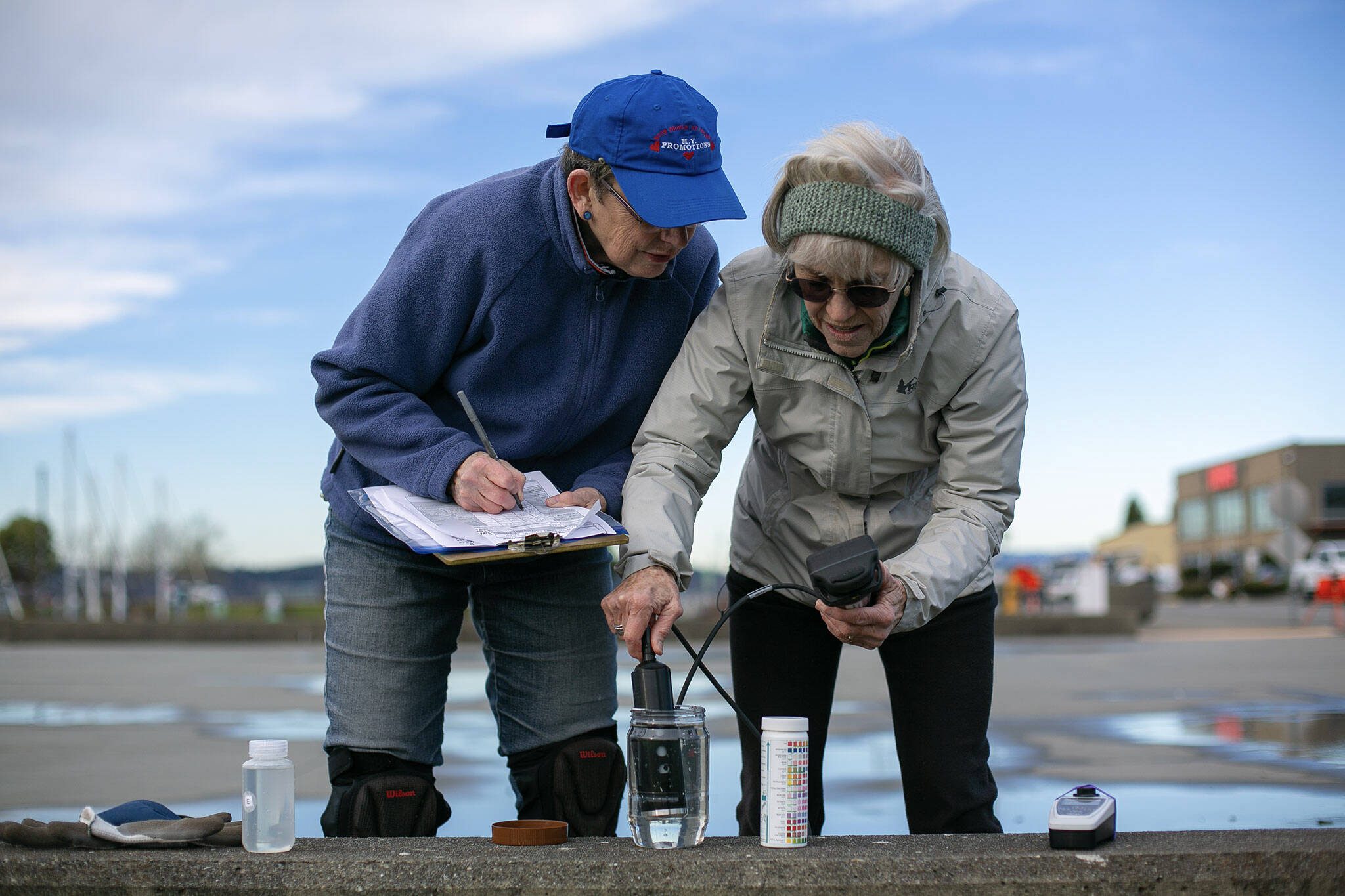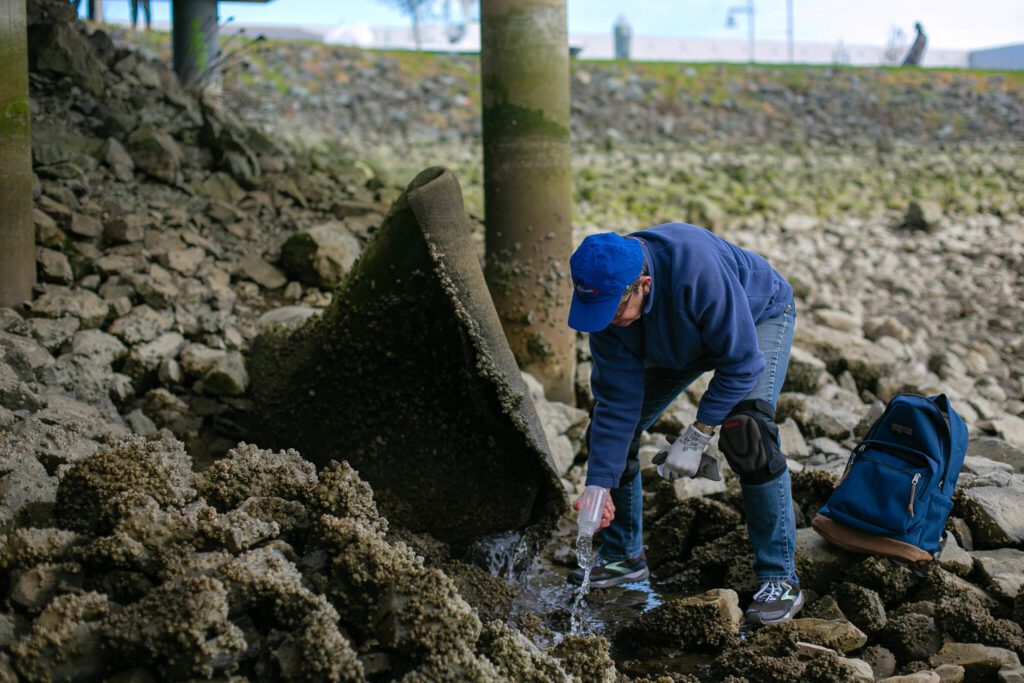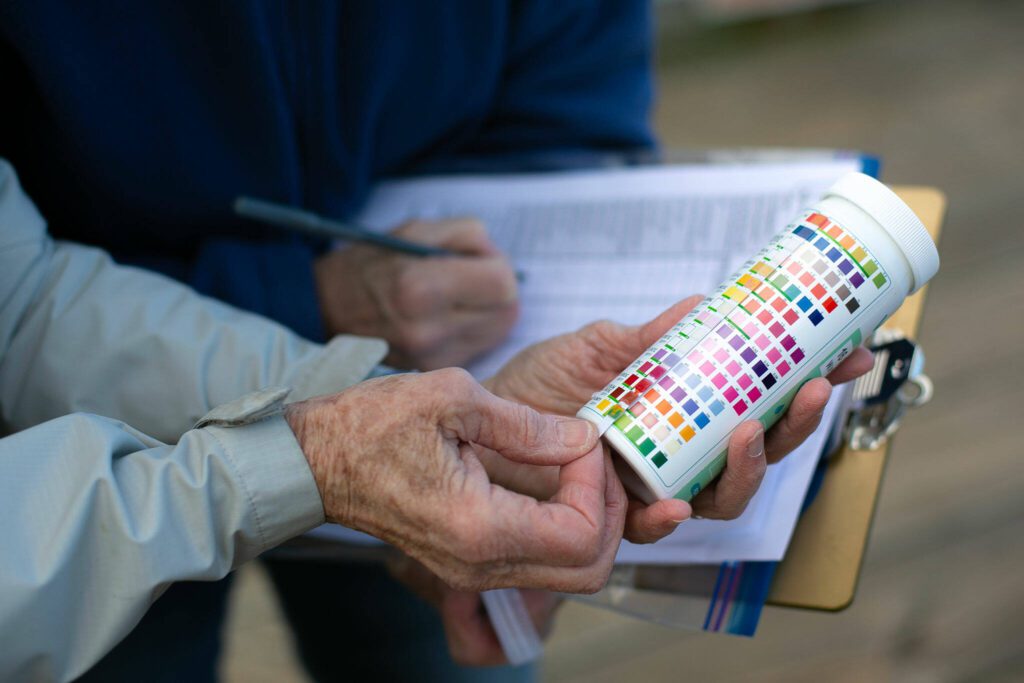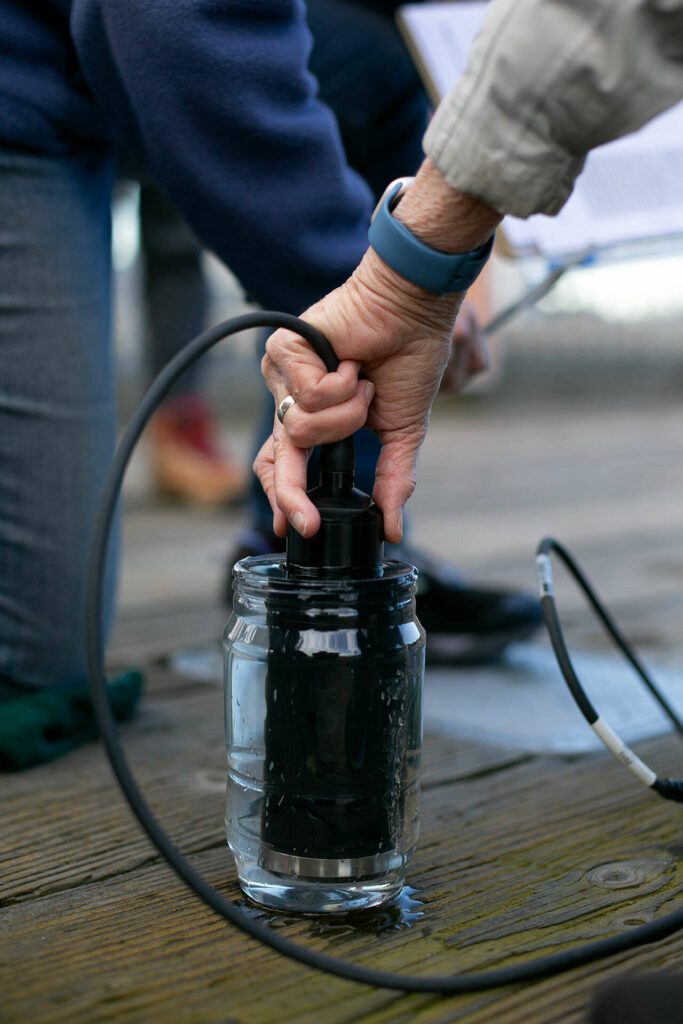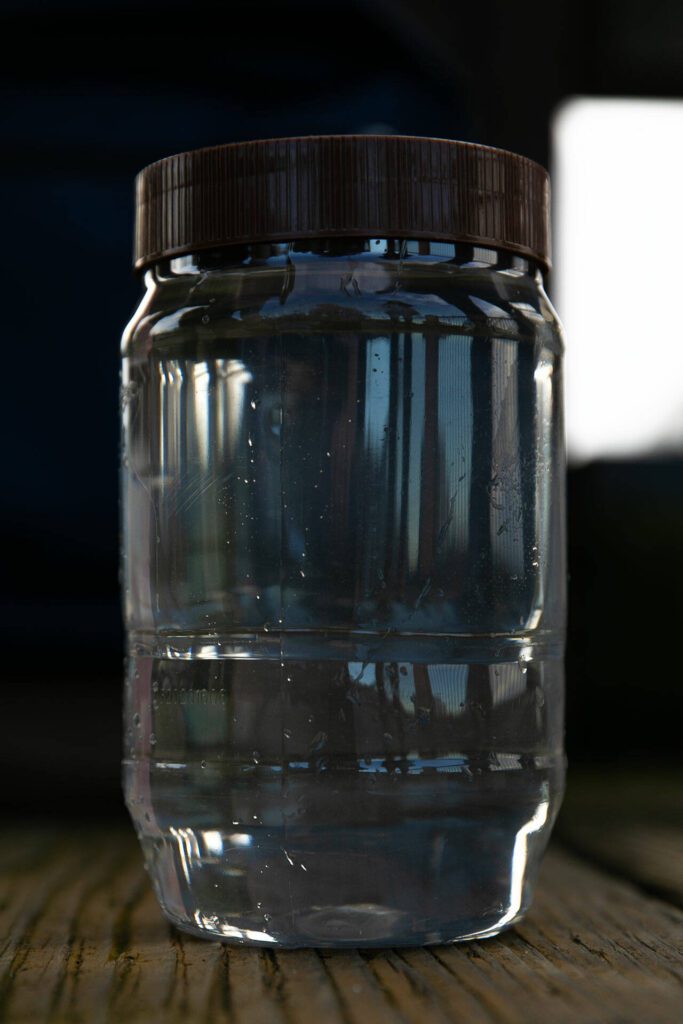EVERETT — At low tide along the Everett waterfront, two volunteers eyed the rocky shore and steep decline toward a stormwater drain.
Retirees Claudia Douglass and Lynn Lichtenberg took turns trekking down to the pipe’s opening to fill up containers with stormwater samples.
It was Douglass’ turn. Equipped with a small bottle, she rinsed the container several times before filling and capping it.
“It wasn’t pretty, but it happened,” Douglass joked, as she scrambled back to stable ground.
The two women were tasked with filling out a worksheet at each of the four outfalls near the waterfront. As volunteers with Salish Sea Stormwater Monitoring, they observed and measured everything from the water’s cloudiness to its odor.
The state Department of Ecology tasks local governments with managing and controlling stormwater pollution. But volunteers want to help, as many are concerned about how polluted water affects salmon.
Studies conducted by the state Department of Fish and Wildlife regularly find high concentrations of flame retardant chemicals known as polybrominated diphenyl ethers, or PBDEs, in the Snohomish River, especially near the Everett Water Pollution Control Facility. Biologists determined PBDEs can harm juvenile chinook salmon and weaken their already-threatened status in Washington.
This year, Ecology is renewing the water quality permit for the pollution control facility. In the new permit, Ecology staff would require city workers to identify and control the amount of PBDEs that enter Everett’s wastewater treatment plant. But environmental groups believe Ecology needs to add more PBDE requirements to Everett’s permit to hold industrial sources accountable.
‘Hold each other responsible’
PBDEs were largely banned from commercial use in the early 2000s. But the flame retardant chemical is a persistent pollutant, making it difficult to treat. It can accumulate in air and dust, finding its way into wastewater and stormwater.
PBDEs are oftentimes removed from wastewater sludge, but the chemical can still seep through treatment facilities along with sediment, said Lucas Hall, director of projects for the salmon recovery group Long Live the Kings.
“Our wastewater treatment facilities aren’t meant to get out all these chemicals,” Hall said.
Before allowing wastewater to re-enter the environment, treatment plant workers must use physical or chemical means to remove specific pollutants from the water, as required by the state Department of Ecology. Wastewater treatment plant staff are also tasked with controlling the amount of water discharged into rivers, lakes and streams.
In 2019, the state Department of Fish and Wildlife notified the staff from the city of Everett that juvenile chinook salmon from the Snohomish River had high levels of PBDEs compared to other areas in Puget Sound. Fish and Wildlife biologists determined PBDE levels were about 1.5 times higher than the level fish can tolerate before their health is affected.
In response, workers at Everett’s Water Pollution Control Facility reduced the amount of wastewater discharged into the Snohomish River during the salmon outward migration period from February through July, said Jeff Marrs, the operations superintendent for the city’s public works department. The treatment plant instead discharged more wastewater through the facility’s outfall on Port Gardner Bay.
The new water quality permit for the Everett facility, drafted by Ecology staff, outlines new monitoring requirements for PBDEs.
“That monitoring includes looking at our industrial users … and then also monitoring at the facility for PBDEs,” Marrs said.
But Hall said Ecology’s permit needs to establish a pollution reduction plan, setting specific goals for PBDE reduction in the Snohomish River.
“It really only asks city of Everett to go ask your industrial users if they’re using PBDEs, and then ask them to stop discharging them,” Hall said.
Hall said staff at Long Live the Kings also want to make sure test results from wastewater sampling are made publicly available.
“That’s just really important for the city of Everett, for ecology, for our entire community,” Hall said. “It takes the public to hold public agencies — and our community members who may be polluting — responsible and accountable.”
The public comment period for the permit draft ended Jan. 31.
This week, Ecology staff were reviewing comments and plan, “where appropriate,” to make revisions to the permit before issuing it, agency spokesperson Scarlet Tang said.
Ecology has not set a specific date for finalizing the permit.
‘We’re trying to be their partners’
The Salish Sea Stormwater Monitoring project started in 2020 after Anacortes resident Tim Gohrke learned local cities don’t always have resources to regularly monitor stormwater outfalls for pollution.
In Everett, this isn’t the case though, said the city’s surface water compliance specialist Dana Zlateff, who has two stormwater inspectors who assist with monitoring.
“Everett actually does quite a bit of our own monitoring,” she said.
Still, Gohrke has found that stormwater managers in cities like Edmonds have appreciated volunteers’ help in sampling stormwater.
Four years ago, Gohrke connected with the Anacortes stormwater manager, Diane Hennebert, and gathered a group of 18 volunteers to sample water from the city’s stormwater outfalls.
Now the group has 55 volunteers and conducts monitoring in seven cities along Puget Sound, including four cities in Snohomish County.
The group also received funding from the National Fish and Wildlife Foundation to purchase meters and water quality tests.
Project leaders Gohrke and Shannon Valderas also reach out to city officials and stormwater managers before and after they conduct samples.
“We’re trying to be their partners,” Valderas said.
About 8% of the group’s stormwater samples from the past four years have exceeded state thresholds for stormwater quality, according to the project’s website.
After retiring from her job with the state Attorney General’s Office, Lichtenberg wanted to dedicate her time to the environment. She has lived near the Salish Sea since the early 1960s.
So, typically once a month, she and Douglass will spend about an hour on the Everett waterfront, capturing stormwater.
“The health of the waters, fish and critters are dear to my heart,” Lichtenberg said, “and need our help.”
Ta’Leah Van Sistine: 425-339-3460; taleah.vansistine@heraldnet.com; Twitter: @TaLeahRoseV.
Talk to us
> Give us your news tips.
> Send us a letter to the editor.
> More Herald contact information.
